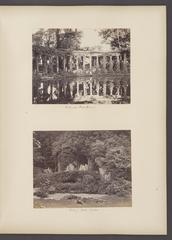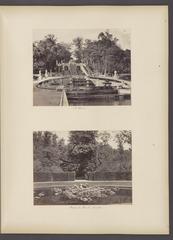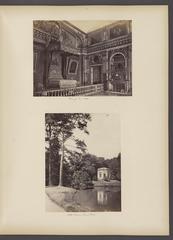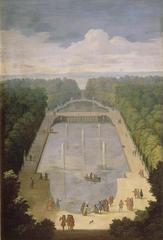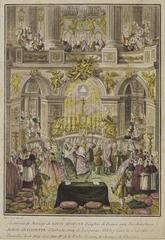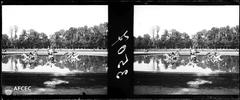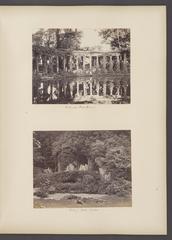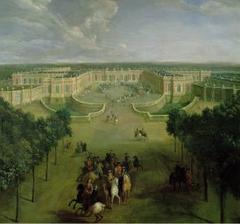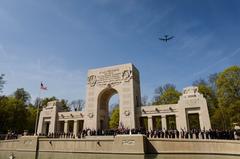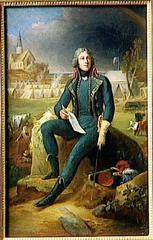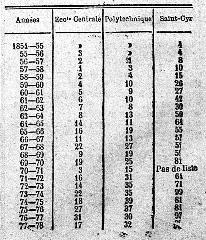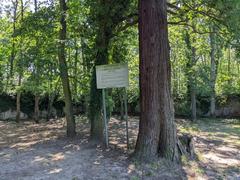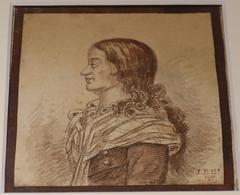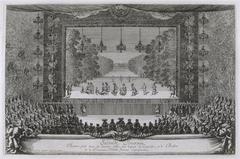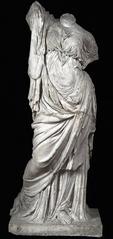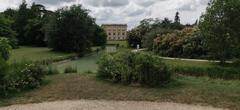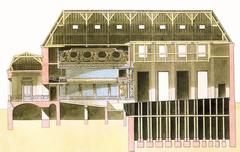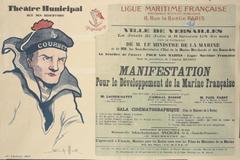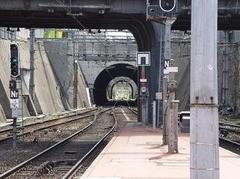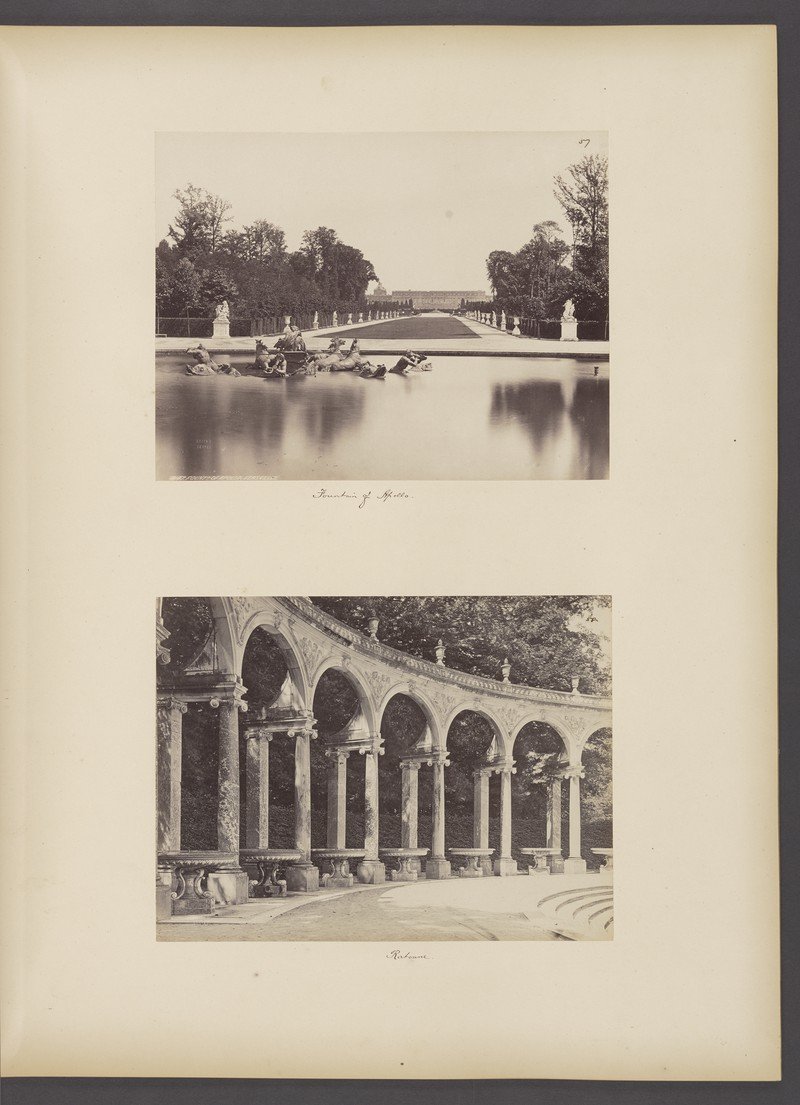
Versailles Park Visiting Hours, Tickets, and Travel Guide for Versailles, France
Date: 03/07/2025
Introduction to Versailles Park: Essential Visitor Insights
The Park of Versailles, adjacent to the legendary Palace of Versailles, stands as a monumental achievement in French royal history, landscape architecture, and cultural heritage. Located just 18 kilometers west of Paris, this vast estate offers an immersive journey through centuries of artistic innovation and political power. Originally a hunting lodge for King Louis XIII, the site was transformed by Louis XIV into one of the most spectacular royal complexes in Europe. Today, spanning over 800 hectares, the Park of Versailles invites visitors to explore grand avenues, ornamental lakes like the Grand Canal, secluded groves, and remarkable architectural gems. As a UNESCO World Heritage Site, the park is not only a testament to French grandeur but also a vibrant center for seasonal events, art exhibitions, and recreation. This comprehensive guide provides everything you need to plan your visit—covering history, tickets, visiting hours, accessibility, and travel tips (versailles-tickets.tours; worldhistoryedu.com; chateauversailles.fr; World in Paris).
Table of Contents
- Early Origins and Royal Transformation
- Architectural and Artistic Achievements
- Versailles as the Center of Power
- Revolutionary Upheaval and Decline
- Versailles in Modern History
- Visiting the Palace of Versailles: Practical Information
- Historical Evolution and Design of the Park of Versailles
- Symbolic and Political Significance
- Artistic and Cultural Impact
- Key Features and Areas of Interest
- Scientific and Educational Role
- Visitor Information: Hours, Tickets, and Travel Tips
- Ongoing Preservation and Global Influence
- The Grand Perspective and Layout
- The Fountains of Versailles
- The Groves (Bosquets)
- The Grand Canal
- Trianon Estate and Queen’s Hamlet
- Seasonal Events and Fountain Shows
- Recreational Activities
- Practical Visitor Information
- Artistic and Historical Significance
- Tips for Exploring the Main Attractions
- Frequently Asked Questions (FAQ)
- Visual Enhancements
- Conclusion and Call to Action
- Insider Recommendations
Early Origins and Royal Transformation
The Versailles estate began as a modest hunting lodge commissioned by King Louis XIII in 1623. Its strategic location—abundant in forests and wildlife—made it a favored retreat. Under King Louis XIV, from 1661 onward, Versailles was transformed into a symbol of absolute monarchy and artistic splendor. The king assembled a team including architect Louis Le Vau, landscape designer André Le Nôtre, and decorator Charles Le Brun, whose collaboration produced the palace and park’s iconic features (travelpander.com). By 1682, the royal court and government had officially relocated to Versailles, marking it as the political and cultural heart of France (versailles-tickets.tours).
Architectural and Artistic Achievements
Versailles is a masterpiece of Baroque architecture, renowned for its opulent interiors and the harmonious design of its gardens. Key features include the Hall of Mirrors, the Royal Chapel, the Grand and Petit Trianon, and the Queen’s Hamlet. André Le Nôtre’s geometric gardens set a benchmark for landscape design across Europe, adorned with fountains, sculptures, and ornamental lakes (paristouristinformation.fr; travelpander.com).
Versailles as the Center of Power
From 1682 to the French Revolution in 1789, Versailles was the epicenter of French political and cultural life. The palace hosted the royal family, nobility, diplomats, and artists, and was the site for grand ceremonies and influential artistic performances. Its court culture shaped European tastes, while its architecture and garden design became models for royal residences across the continent (onthisday.com; en.chateauversailles.fr).
Revolutionary Upheaval and Decline
The French Revolution dramatically altered Versailles’ destiny. The Estates-General met here in 1789, and pivotal events like the Tennis Court Oath and Women’s March on Versailles unfolded within its walls. After the royal family was forced to return to Paris, the palace fell into neglect until King Louis-Philippe converted it into a museum in the 1830s (en.chateauversailles.fr; versailles-tickets.tours).
Versailles in Modern History
In the 20th century, Versailles regained prominence as the site of the 1919 Treaty of Versailles, ending World War I. Restoration efforts have preserved its artistic treasures despite wartime damages and natural disasters. Today, it is a UNESCO World Heritage Site celebrated for its universal value (travelpander.com).
Visiting the Palace of Versailles: Practical Information
Visiting Hours
- Palace: Tuesday–Sunday, 9:00 AM–6:30 PM (last entry 5:30 PM). Closed on Mondays and major holidays.
- Gardens: Open daily, with extended hours during Musical Fountains Shows.
- Park: Generally open daily from 7:00 AM–8:30 PM (seasonal variations apply).
Tickets and Prices
- Passport Ticket: Full access to palace, gardens, Trianon estates, and exhibitions.
- Palace + Gardens: For palace and gardens only.
- Gardens Only: Free on most days, ticketed during fountain shows.
- Trianon Estate: Separate ticket required or included with Passport.
- Discounts: Free for EU residents under 26, children under 18, with additional reductions for seniors and teachers.
Advance online booking is strongly advised.
Accessibility
- Wheelchair-accessible ramps, adapted restrooms, and free wheelchair loans are available.
- Assistance dogs are allowed.
- Most park paths are accessible, though some areas may be uneven.
Getting There
- By train: RER C to Versailles Château Rive Gauche (10-minute walk to entrance).
- By car: Paid parking is available near the palace gates and Trianon.
- By tour: Many guided tours from Paris include transportation.
Guided Tours and Special Events
- Audio guides, private tours, and themed experiences are available.
- Seasonal events: Musical Fountains Show (Grandes Eaux Musicales), Night Fountain Shows, concerts, and exhibitions.
Nearby Attractions
- Explore the town of Versailles: local markets, cafés, Versailles Cathedral, Potager du Roi (King’s Kitchen Garden), and Royal Stables.
Visual Highlights and Photography Tips
- Best shots: Hall of Mirrors, Latona Fountain, Grand Canal.
- Early morning light and weekdays are optimal for photos and fewer crowds.
- Virtual tours and interactive maps are available on the official website.
FAQ
Q: Can I buy tickets on-site?
A: Yes, but online purchase is recommended to avoid queues.
Q: Are there any free entry days?
A: First Sunday of each month (November–March).
Q: Is photography allowed?
A: Yes, without flash. Tripods and professional gear require permission.
Q: How long should I plan for my visit?
A: At least half a day; a full day to include Trianon estates and events.
Historical Evolution and Design of the Park of Versailles
Distinct from the formal gardens, the Park of Versailles is a vast landscape extending the palace’s grandeur into the countryside. Designed by André Le Nôtre, its 800 hectares feature grand avenues, woodlands, water features, and the iconic Grand Canal, all arranged to emphasize symmetry, perspective, and the king’s dominance over nature (worldhistoryedu.com). The park’s design became the gold standard for European landscape architecture (historytools.org).
Symbolic and Political Significance
The park was integral to Louis XIV’s strategy to centralize and demonstrate royal authority. Its planned vistas, controlled access, and grand scale reinforced the image of absolute monarchy. It also hosted scientific experiments and public spectacles, reflecting Enlightenment ideals (chateauversailles.fr).
Artistic and Cultural Impact
Versailles Park is a living museum—its sculptures, fountains, and groves showcase the artistic achievements of the 17th and 18th centuries. The park continues to serve as a cultural venue, hosting art exhibitions, concerts, and contemporary installations (historytools.org).
Key Features and Areas of Interest
The Grand Canal
A monumental waterway 1,670 meters long, the Grand Canal was used for boating, naval displays, and royal festivities. Today, rowboats are available for visitors to enjoy panoramic park views (chateauversailles.fr).
Bosquets and Woodlands
Fifteen bosquets (groves) are hidden within the geometric garden grid, each with unique design elements like fountains and marble colonnades. These were venues for private gatherings and court entertainments.
Trianon Estate
Comprising the Grand Trianon, Petit Trianon, and Queen’s Hamlet, these retreats illustrate the royal family’s private life and evolving tastes. The Queen’s Hamlet, built for Marie Antoinette, features a pastoral village and gardens (worldhistoryedu.com).
Menagerie and Little Venice
Historic features included a royal menagerie and “Little Venice,” where Venetian gondolas entertained the court. Their legacy remains in the park’s layout and stories.
Scientific and Educational Role
Versailles Park was also a center for scientific research: botanical cultivation, zoological studies, and technological demonstrations occurred here. Educational programs today highlight the park’s biodiversity and conservation (chateauversailles.fr).
Visitor Information: Hours, Tickets, and Travel Tips
Visiting Hours and Access
- Park: Typically open 7:00 AM–8:30 PM in peak season; hours may vary with weather and events (chateauversailles.fr).
- Entrances: Queen’s Gate, Saint Anthony’s Gate, Sailors’ Gate.
- Vehicle Access: Permitted during specific hours with parking near the Grand Canal and Trianon.
Ticket Information
- Park access: Free, except during Musical Fountains Shows and special events.
- Combined tickets: Available for palace, gardens, and Trianon Estate.
- Discounts: Free entry for EU residents under 26, children under 18, and certain professionals. Advance booking is highly recommended.
Getting There
- By train: RER C to Versailles Château Rive Gauche (10-minute walk).
- By tour/bus/shuttle: Options available from Paris.
- By car: Parking lots available at main gates.
Accessibility
- Wheelchair-accessible routes, reserved parking, and adapted restrooms.
- Free entry and parking for visitors with disabilities (with documentation).
Activities and Amenities
- Walking, cycling, golf carts, and rowboats available for hire.
- Picnicking: Designated areas, especially near the Grand Canal.
- Dining: Cafés, kiosks, and picnic basket vendors.
- Restrooms: Multiple facilities around the estate.
Visitor Tips
- Plan with the interactive map (chateauversailles.fr).
- Wear comfortable shoes; expect significant walking.
- Bring water, snacks, and weather protection.
The Grand Perspective and Layout
The Grand Perspective, designed by André Le Nôtre, is the main axis stretching from the palace terrace through the gardens and across the Grand Canal, creating a breathtaking sense of scale and symmetry (UNESCO).
The Fountains of Versailles
Engineering Marvel
Versailles features 50 fountains and over 620 water jets, supplied by a 35-kilometer network of pipes, much of it original to the 17th century. The closed-circuit system is managed by a dedicated team (World in Paris).
Notable Fountains
- Latona Fountain: Depicts the myth of Latona, central to the palace’s approach, animated by intricate jets (World in Paris).
- Apollo Fountain: Symbolizes Louis XIV as the Sun King, facing the Grand Canal (World in Paris).
- Neptune Fountain: Features 99 jets and elaborate sculptures, with stunning displays during afternoon fountain shows (World in Paris).
- Mirror Pool: Reflects the palace façade, bordered by statues of French rivers (World in Paris).
The Groves (Bosquets)
Fifteen themed groves are scattered through the gardens, each designed for court entertainment and secret gatherings. Many are only accessible during special events or fountain show days.
The Grand Canal
The 1.67-kilometer Grand Canal is both a central visual axis and a recreational hub, historically used for boating and court festivities. Today, visitors can rent rowboats for unique views of the palace and park (Visiting Paris By Yourself).
The Trianon Estate and Queen’s Hamlet
The Grand Trianon and Petit Trianon offer a glimpse into royal private life. The Queen’s Hamlet, a rustic village built for Marie Antoinette, is a peaceful escape from the main palace crowds (Visiting Paris By Yourself).
Seasonal Events and Fountain Shows
Musical Fountains Shows (Grandes Eaux Musicales)
From April to October, the Musical Fountains Shows animate the gardens with synchronized water displays set to Baroque music. Special tickets are required (World in Paris).
Night Fountain Shows
Nighttime events feature illuminated gardens, music, and fireworks—a spectacular way to experience Versailles (Visiting Paris By Yourself).
Recreational Activities
- Walking and cycling: Rent bikes or golf carts to explore the park (Welcome to Versailles).
- Boating: Rowboat rentals on the Grand Canal.
- Picnicking: Designated areas near the canal and in quiet groves.
Practical Visitor Information
Visiting Hours
- Park: 8:00 AM–8:30 PM (April–October); 8:00 AM–6:00 PM (November–March). Fountains operate seasonally (World in Paris).
Tickets
- Free park entry on most days, except during fountain events.
- Special event tickets: Purchase online in advance.
Getting There
- RER C train: Versailles Château Rive Gauche.
- Car: Paid parking at main gates.
- Shuttle/guided tours: Available from Paris.
Accessibility
- Wheelchair-accessible routes; rentals available.
- Some areas may be difficult due to gravel or stairs.
Tips for Exploring the Main Attractions
- Arrive early to avoid crowds, especially on fountain show days (Welcome to Versailles).
- Comfortable shoes are a must.
- Plan your route with the interactive map (The Tourist Checklist).
- Check the weather and bring sun or rain protection (Visiting Paris By Yourself).
- Book tickets in advance for special events (World in Paris).
Frequently Asked Questions (FAQ)
Q: What are the Park of Versailles visiting hours?
A: Typically 8:00 AM–8:30 PM in summer, shorter in winter. Check the official website for updates.
Q: Are tickets required for the park?
A: Free entry except during fountain shows and for Trianon estate access.
Q: Is the park wheelchair accessible?
A: Most main paths are accessible; mobility aids available for rent.
Q: When are the fountain shows?
A: Musical Fountains Shows run April–October on select days; check the official schedule.
Visual Enhancements
- [Insert panoramic images: “Palace of Versailles main façade with gardens”, “Hall of Mirrors interior”, “Versailles gardens fountain and sculptures”, “Grand Trianon palace exterior”, “Musical Fountains Show at night”.]
- [Embed an interactive map highlighting entrances, key attractions, and transport links.]
- [Include a virtual tour video for a preview of palace interiors, gardens, and special events.]
Conclusion and Call to Action
The Park of Versailles is a living testament to France’s artistic, political, and horticultural legacy. Whether you’re passionate about history, architecture, or simply seeking an unforgettable day trip, planning your visit with up-to-date information on hours, tickets, and attractions is key to making the most of your experience. For more tips, interactive maps, and exclusive content, download the Audiala app and follow us on social media. Begin your royal adventure to Versailles today!
Summary and Final Tips for Visiting Versailles Park
Versailles Park offers a journey through centuries of French grandeur, art, and landscape mastery. Its iconic features—grand canals, engineered fountains, and intimate Trianon retreats—make it a dynamic destination. Plan ahead: secure tickets online, check visiting hours, and consider guided tours for a richer experience. The park’s ongoing restoration, cultural events, and biodiversity initiatives ensure it remains a vibrant site for visitors and scholars alike. For further guidance, download the Audiala app and explore our related articles (chateauversailles.fr; World in Paris; Paris Discovery Guide).
References and Further Reading
- The Palace of Versailles: Visiting Hours, Tickets, and a Complete Historical Guide to Paris’s Iconic Royal Site, 2025, TravelPander
- Park of Versailles Visiting Hours, Tickets, and Must-See Historical Sites, 2025, WorldHistoryEdu
- Park of Versailles Visiting Hours, Tickets, and Must-See Historical Sites, 2025, Chateau Versailles Official Site
- The Palace of Versailles: Visiting Hours, Tickets, and a Complete Historical Guide, 2025, Versailles Tickets
- Historical Evolution and Design of the Park of Versailles, 2025, HistoryTools
- The Fountains of Versailles, 2025, World in Paris
- Visiting the Park of Versailles: Hours, Tickets, and Main Attractions, 2025, Visiting Paris By Yourself
- The Grand Perspective and Layout of Versailles, 2025, UNESCO World Heritage
- Complete Guide to Visiting the Park of Versailles: Hours, Tickets, and Tips, 2025, Paris Discovery Guide

